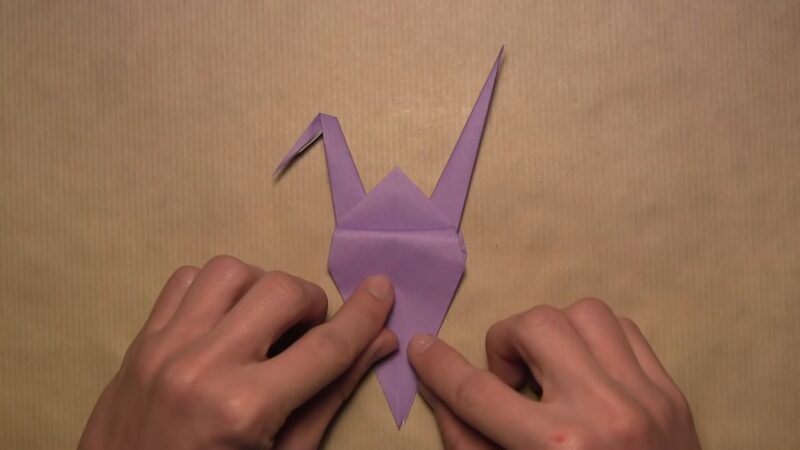Origami, the age-old art of paper folding, has been practiced for centuries and holds a special place in many cultures. One of the most iconic and timeless pieces in origami is the crane. A symbol of hope and longevity in Japanese culture, the crane has taken on various meanings in different parts of the world.
Today, we’re discussing the process of crafting your very own origami crane, simplifying each step for beginners while also offering seasoned enthusiasts a refreshing recap.
The Roots of the Crane in Origami
Origami and Cultural Importance
Origami has its roots deep in Japanese history, dating back to the Heian period (794-1185 AD). It’s not just about creating shapes; it’s a symbolic and ritualistic art.
- Celebrations: Many origami figures, including the crane, are used in celebrations, representing good luck and prosperity.
- Spirituality: In Shinto traditions, the crane represents long life and happiness.
The Tale of a Thousand Cranes
Sadako Sasaki, a young girl affected by the atomic bombing of Hiroshima, is renowned for folding a thousand origami cranes in the hopes of being granted a wish. This tale has since inspired many to:
- Fold cranes as a symbol of peace.
- Believe in the Japanese legend that one who folds a thousand cranes gets a wish.
Crafting Through the Ages
Origami was once a luxury, with paper being a rare commodity. Over time, as paper became more accessible, origami transformed from an elite pastime to a popular hobby. Highlights include:
- Early origami designs were simpler.
- The Edo period saw an explosion in the variety of origami designs.
Crane’s Timeless Appeal
The crane has been a consistent figure in the evolution of origami, with its design being:
- Adaptable: Variations exist, from simple to complex, suiting all skill levels.
- Universal: Its appeal isn’t limited to Japan. It has become globally recognized and admired.
Crafting Your Origami Crane
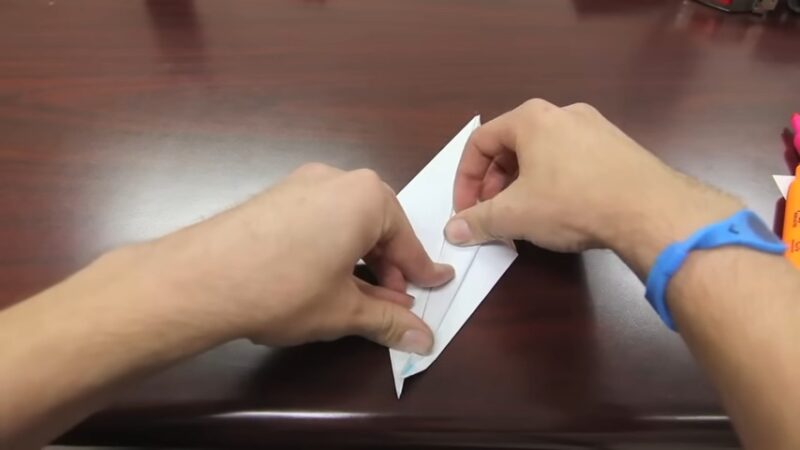
Materials and Preparations
Your choice of paper can make a significant difference in the final result. Consider:
- Thickness: Thin paper is generally preferable as it’s easier to fold and stays creased.
- Size: A typical size for beginners is 6×6 inches.
- Texture and Color: Textured paper can add depth, and color choice can influence the crane’s final appearance.
Setting the Right Environment
Origami requires precision. Preparing a suitable environment helps. Ensure:
- A flat surface to work on.
- Good lighting.
- Minimal distractions.
Step-by-Step Guide
Starting with the Preliminary Base
- Start with the colored side of your paper facing down.
- Fold the paper diagonally both ways and open it.
- Fold it into a rectangle, switch the orientation, and fold again.
- Using the creases, collapse the paper into a triangle. This is the preliminary base.
Crafting the Crane’s Shape
- With the open end facing down, fold the two sides to meet at the center, creating a kite shape.
- Fold the top triangle down, then unfold all. This gives you creases.
- Using the creases, open the top layer and squash it flat. Repeat on the other side.
- Fold the sides of both layers into the center.
- Fold the top triangle down, lift the bottom point, and fold it up.
- Fold the project in half, then rotate.
- Fold one flap down to create the crane’s head. Shape as desired.
- Gently pull apart the wings.
Tips and Tricks for a Perfect Crane
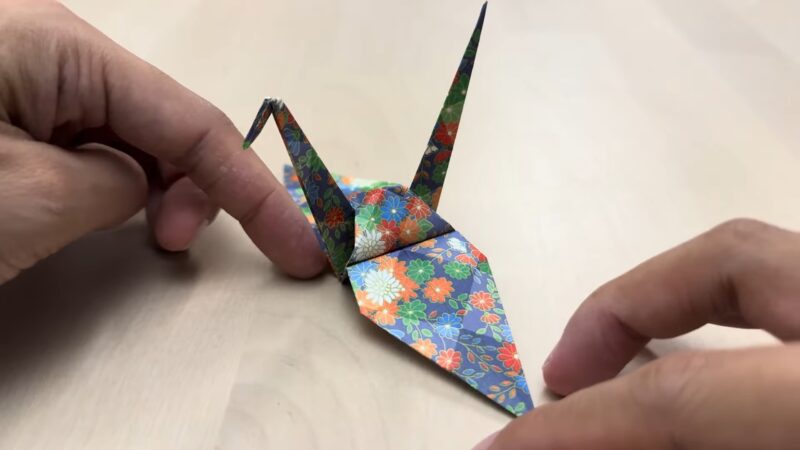
Common Mistakes to Avoid
Accidental folds can mar the crane’s appearance. To prevent this:
- Always fold with intention.
- Pinch only when sure of the fold.
Torn Paper
Thin paper can tear easily. Tips to prevent this include:
- Being gentle during complex folds.
- Avoiding unnecessary refolding.
Enhancing Your Crane
Once you’re comfortable, customize! Ideas include:
- Coloring the wings.
- Using patterned paper.
- Adding a string to hang it as décor.
Making a Crane Chain
A chain of cranes can be a beautiful decoration or gift. To make one:
- Fold multiple cranes.
- Thread them using a needle, spacing them as desired.
Elevating Your Origami Skills
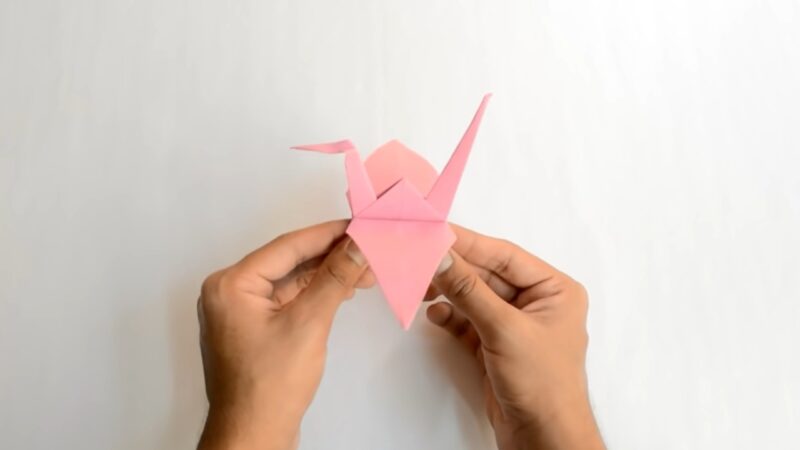
The crane is just the tip of the iceberg. Origami has plenty of designs, each unique and intriguing. Once you’ve mastered the crane:
- Try animals like frogs, turtles, or dragons.
- Try out modular origami, where multiple units come together to form intricate designs.
- Experiment with action origami, designs that move, such as a jumping frog or a flapping bird.
Join Origami Communities
There’s a vast world of origami enthusiasts out there. Engaging with this community can be fulfilling:
- Online forums and social media groups offer a platform to share creations and get feedback.
- Workshops and classes help in honing skills under expert guidance.
- Origami conventions, held globally, can be a great place to meet like-minded individuals and witness world-class designs.
Challenges and Rewards of Origami
Origami isn’t just about the final product; the journey itself can be therapeutic. Benefits include:
- Enhanced concentration and mindfulness.
- Stress relief, as the repetitive motions and focus can be meditative.
- A boost in self-esteem upon completing intricate designs.
Participating in Origami Challenges
For those looking to up the ante, there are numerous challenges:
- The “One Paper Challenge” where complex designs are made from a single, uncut sheet.
- Time-bound challenges to test speed and accuracy.
- Participating in collaborative projects, such as creating large-scale origami installations.
Preserving and Sharing Your Creations
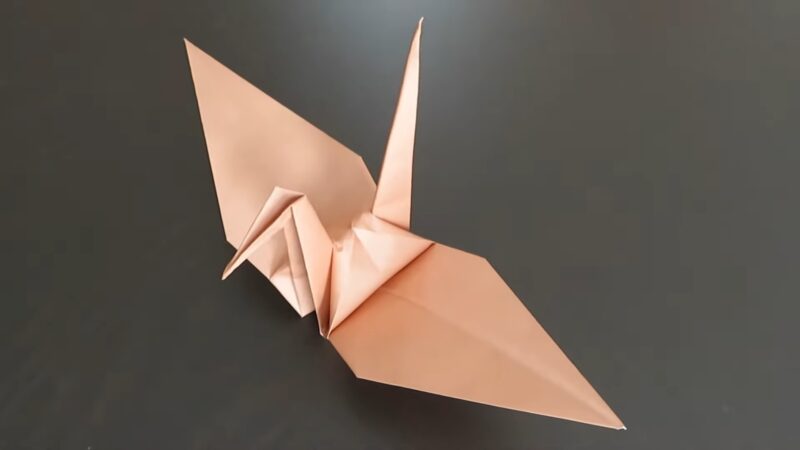
Showcasing your work can be as creative as the folding process. Consider:
- Shadow boxes: A 3D frame that gives depth and protection.
- Mobiles: Hang cranes or other designs from strings at varying lengths.
- Laminating or framing flatter pieces.
Gifting Your Creations
Origami makes for personalized and meaningful gifts. Think:
- Origami bouquet instead of flowers.
- Personalized bookmarks for book lovers.
- Origami jewelry like earrings or pendants.
Documenting and Teaching
Share your journey and techniques:
- Document your learning process, highlighting challenges and successes.
- Create tutorials for beginners or explore advanced techniques for seasoned folders.
Teaching Workshops
Imparting your knowledge can be fulfilling. Consider:
- Organizing workshops in local community centers.
- Hosting online classes.
- Collaborating with schools for origami-based art projects.
FAQs
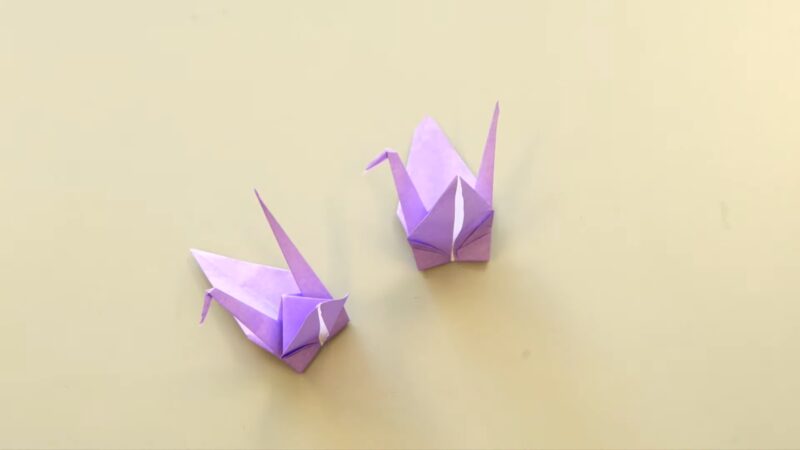
Why Is the Crane Such a Popular Origami Figure?
While the crane holds significant cultural and historical importance, particularly in Japan, its popularity in origami is also due to its balanced complexity.
The crane is challenging enough for beginners to learn various fundamental folding techniques but not too complex to deter newcomers. Plus, its elegant design and symbolism of peace and hope make it universally loved.
How Long Does It Typically Take to Fold an Origami Crane?
For a beginner, folding a crane might take anywhere from 20 to 30 minutes as they familiarize themselves with each step. However, with practice, an individual can fold a crane in under 5 minutes. The time can vary based on the size of the paper and the intricacy of any added details.
Can I Use Regular Printer Paper to Fold a Crane?
Yes, you can use regular printer paper. However, it might be a bit thicker and less flexible than traditional origami paper. If using printer paper, consider using a larger sheet to make the folding process easier, and ensure it’s cut into a perfect square before starting.
How Can I Make My Origami Crane More Durable?
To increase the durability of your origami crane, you can:
- Use thicker paper or specialty origami paper designed for durability.
- Apply a light spray of clear sealant or fixative, which can help protect the crane from moisture and wear.
- Store or display your crane in a location where it won’t be frequently handled or exposed to the elements.
Are There Any Cultural Etiquettes I Should Be Aware of When Gifting Origami Cranes?
In many cultures, especially in Japan, gifting an origami crane symbolizes a wish for peace, health, and good fortune. If you’re gifting a set of 1,000 cranes (known as “senbazuru” in Japanese), it’s a powerful gesture of dedication, often given in situations like weddings or serious illnesses.
It’s always a good idea to accompany the gift with a note explaining the symbolism, ensuring the gesture is understood and appreciated.
How Do I Make My Origami Crane Stand Upright?
To make your crane stand upright, ensure the bottom is flat and balanced. You can gently press the bottom on a flat surface after completion. If it still doesn’t stand, consider slightly folding the tips of the wings inward or placing a small weight (like a bead) inside the crane during the folding process to give it added stability.
Final Words
Origami is a beautiful art form that intertwines history, culture, and creativity. The crane, with its elegance and symbolism, is a perfect starting point for any budding origami enthusiast.
With practice, patience, and a touch of personal flair, you can master this timeless piece and perhaps even embark on the journey to fold a thousand cranes of your own. Remember, every fold is a step closer to creating a masterpiece! For more creative DIY ideas, check out our article that describes how you can make paper flowers for all sorts of different occasions.
